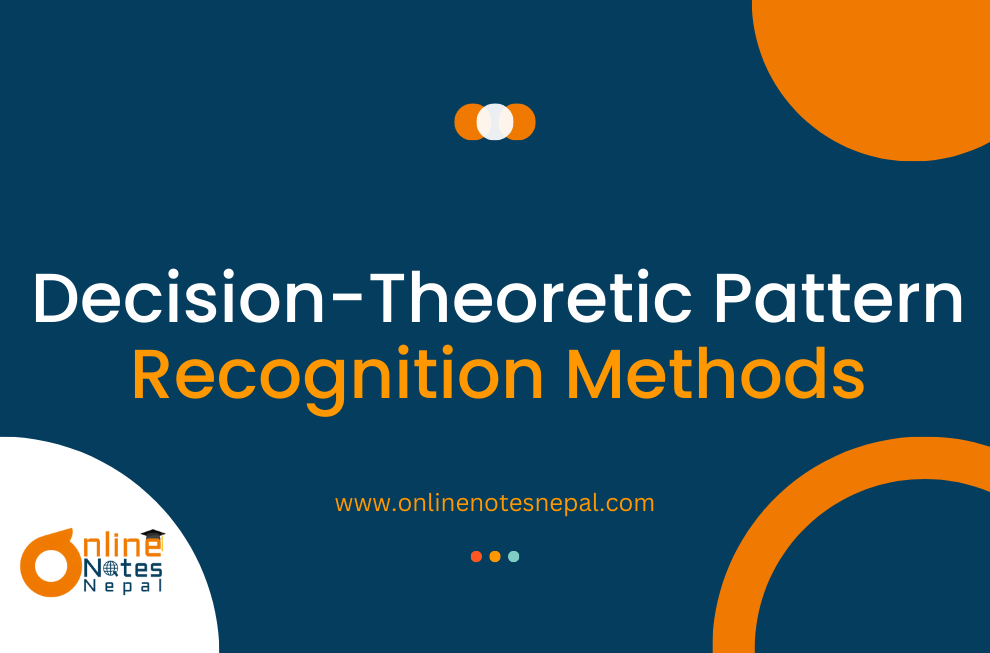Published by: Neha Khadka
Published date: 30 Jul 2024

The classification of patterns is decided upon using decision rules and probabilistic models in decision-theoretic pattern recognition techniques. These techniques, which seek to reduce risk or error in classification judgments, are based on the ideas of decision theory and statistical inference.
Bayes Decision Theory: A fundamental framework for decision-theoretic pattern recognition. It involves calculating the posterior probability of each class given an observation and making decisions to minimize the expected loss.
Decision Rules: Strategies for classifying patterns based on the computed probabilities and costs associated with decisions. Common decision rules include the minimum-error-rate rule and the minimum-risk rule.
Loss Function: A function that quantifies the cost of making incorrect decisions. Different types of loss functions can be used depending on the application, such as zero-one loss or more complex cost-sensitive loss functions.
Likelihood Function: A function that measures the probability of the observed data given a particular class.
Prior Probability: The probability of each class before observing any data, representing prior knowledge about the class distribution.
Posterior Probability: The probability of a class given the observed data, computed using Bayes' theorem.
Bayesian Classification
Maximum Likelihood Estimation (MLE)
Maximum A Posteriori (MAP) Estimation
Discriminant Functions
Decision Trees
Support Vector Machines (SVM)
Decision-theoretic pattern recognition methods provide a systematic and probabilistic approach to making classification decisions, leveraging statistical principles to handle uncertainty and optimize decision-making processes.